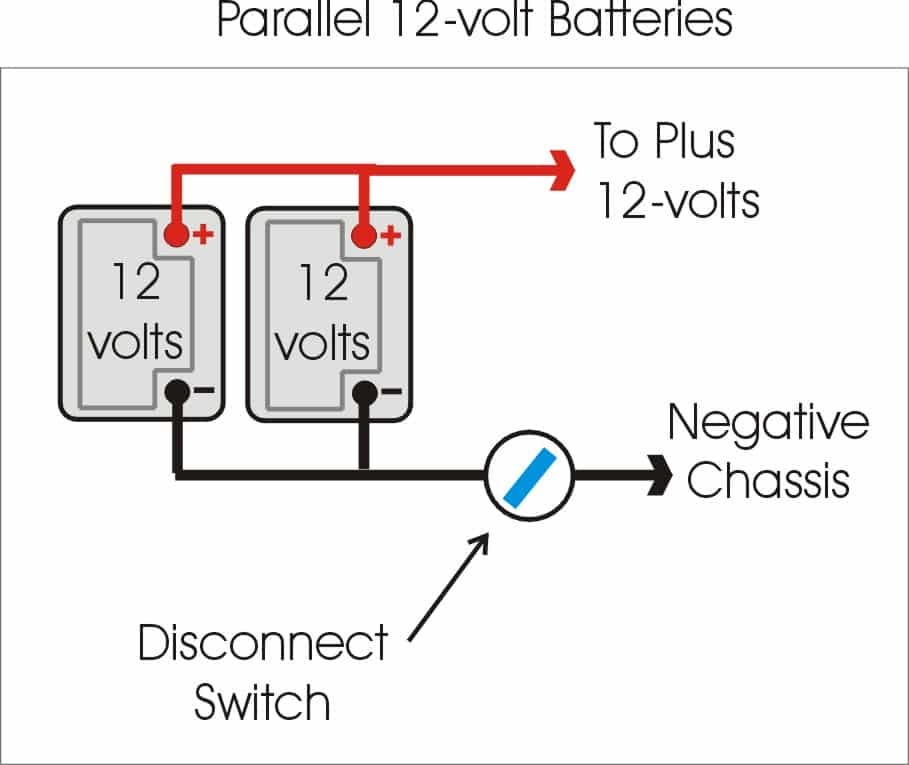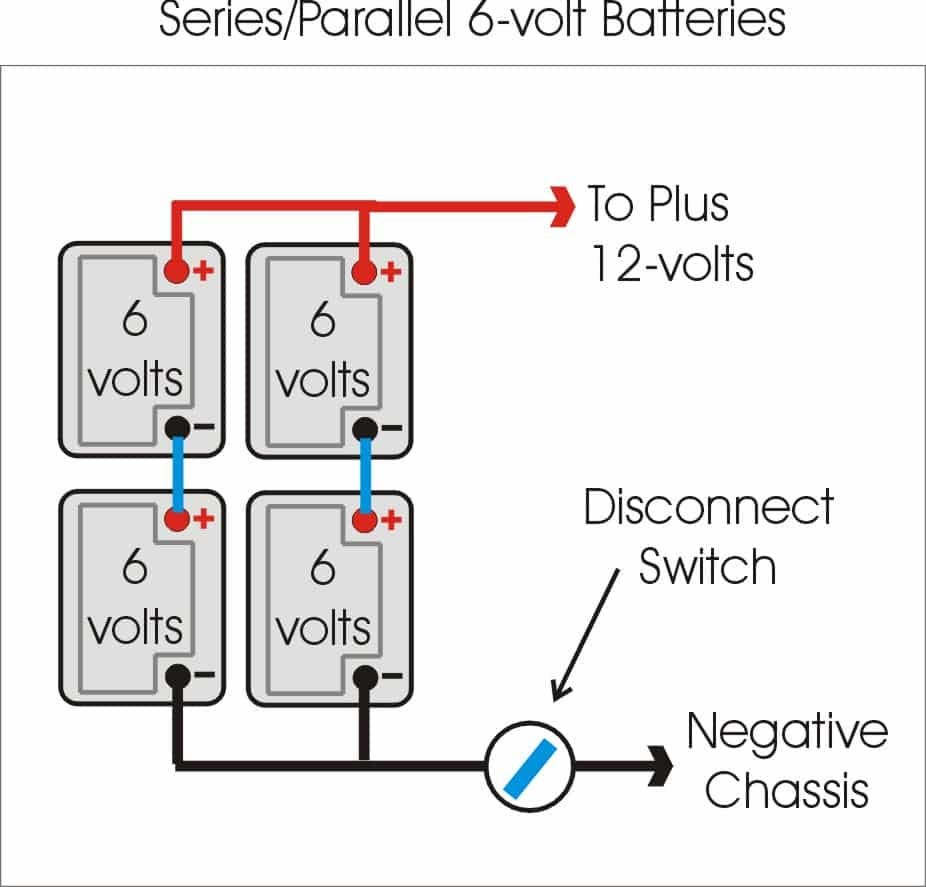Can you mix different size/age/types of RV batteries?
Can you use batteries with different size and age in your RV when connecting them in series or parallel?
Hi Mike,
I’m new to RVelectricity but not new to RVing. I want to add a 2nd battery to my fifth-wheel trailer. My current battery is a 27DC deep-draw 12v RV/Marine battery—physically large size. The battery compartment is too small to accommodate a 2nd 27DC. If I install a physically smaller battery in parallel with my current 27DC, will the smaller one charge quicker and then overcharge while my inverter/charger continues to charge the larger battery? Do you see any kind of problem with this battery arrangement?
Thanks - Ken C.
Hey Ken,
Here’s the bad news. You really don’t want to add a second battery in parallel to an existing battery. Doing so will result in very poor performance since the smaller battery will discharge first and then force the bigger battery to recharge it continuously. So you can damage both batteries if you mix ones of different size, age and especially chemistry.
That’s why I’ve always used identical size, age and chemistry batteries in any series, parallel or series/parallel RV battery hookup. To get more energy storage in the same space you’ll really want to upgrade to something like a single 200 Ah Lithium battery.
But don’t believe just me. Here’s what the engineers at Optima say about matching RV batteries that are connected in series or parallel.
From the Optima website….
Can I connect my new BLUETOP® D31M in parallel with my one-year old (Other brand) Marine 29 series?
We would strongly discourage anyone from connecting batteries in series or parallel applications, if the batteries are not identical in age, size and type. It sounds like your batteries are different in each of those ways. Different brands of batteries can have different charging and discharging characteristics, with some accepting a charge or delivering current faster than others. That can be true even if the batteries are the same size.
Different types of batteries (flooded or AGM) also can have different charge/discharge characteristics. When you connect two or more batteries that don't charge and discharge at the same rate, one battery will probably end up overcharged and/or one battery will end up undercharged. Neither is a scenario you want to have happen to your batteries, as it will probably shorten the lifespan of both and could create a potentially create a dangerous situation, if one battery gets severely overcharged.
The same is also true of batteries that are identical in every way, except that one battery is older than the other. As batteries age (or get used), their charge/discharge profile changes. As such, they essentially charge and discharge at a different rate a year later, than they did when they were brand-new. That means you shouldn't connect batteries together that aren't the same age or haven't been used in the same application since they were new, even if they are the exact same make and model. Unfortunately, that means when one battery in a bank of two or more batteries needs to be replaced, they should all be replaced at the same time.
That doesn't mean the other functioning batteries should be discarded entirely, but they should not be used in an application that has batteries that differ in age, size or type. For some marine and RV applications that use a lot of batteries, it may make sense to isolate a larger bank of nine batteries into three smaller banks of three batteries, instead of connecting them all together. That way, if one battery goes bad, far fewer batteries need to be replaced.
Back to me…
I know this is bad (and expensive) news, but that’s the physics of the situation. Read more about it on the Optima website HERE.
Let’s play safe out there… Mike






Hi Mike, got two questions for you.
1. I have a 200aH LiFePO4 battery as my main in my fifth wheel. All properly setups and running fine. Can I add 2 Ever Start 29DC batteries but use a cutoff switch with a 1-2-OFF position? Number 1 would be the LiFePO4 battery and number 2 would be the FLA batteries? They would never be joined that way.
2. How can I power a charger (while on the road with no dc to dc charger(yet)) to the FLA batteries? Any suggestion as to equipment to use is appreciated.
Mike, shouldn’t the positive and negative connections to the serial/parallel banks come from opposite ends? With only two batteries it’s not as important but with more than that and wiring them as shown the last battery in the chain sees a slightly lower voltage, and probably ends up undercharged.